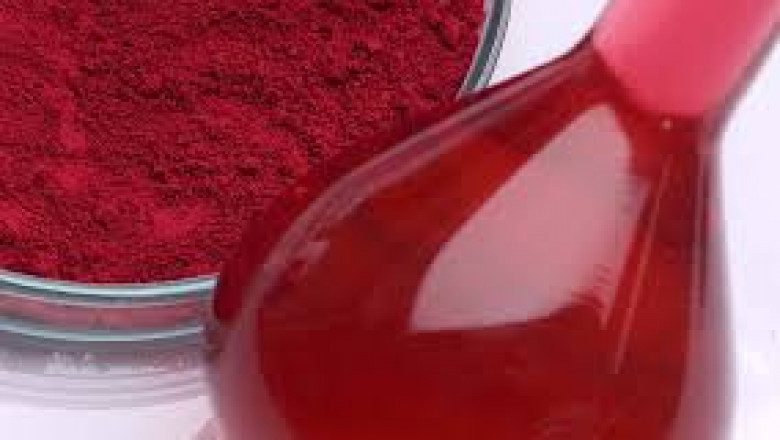views
The use of natural colorants like cochineal extract in food and cosmetics is growing globally, thanks to their non-toxic properties and vibrant hues. However, as with all ingredients, the use of cochineal extract is subject to varying regulatory frameworks across different regions. These regulations ensure that products containing cochineal extract meet safety standards, offer clear labeling to consumers, and comply with local laws. As the Cochineal Extract Market continues to expand, navigating these diverse regulatory landscapes has become crucial for manufacturers aiming to operate on a global scale.
From the United States to the European Union and emerging markets in Asia-Pacific, the regulatory standards around cochineal extract vary in terms of permissible concentrations, safety testing, and disclosure requirements. These differing standards present both challenges and opportunities for market players, especially as consumer demand for transparency and safety grows.
Regulatory Standards in the United States
In the United States, cochineal extract, also known as carmine, is regulated by the Food and Drug Administration (FDA). The FDA classifies it as a color additive for food, drugs, and cosmetics, and its usage is subject to strict guidelines. The Cochineal Extract Market in the U.S. sees its application mainly in cosmetics, personal care products, and food items like beverages, confectionery, and dairy.
The FDA requires that cochineal extract be listed by its common or usual name (carmine) in ingredient lists. Additionally, products containing carmine must bear the label "contains cochineal extract" or "contains carmine" to provide full transparency to consumers. This labeling practice helps individuals who may be allergic to carmine avoid products containing the dye. The U.S. has also enforced limits on the amount of cochineal extract that can be used in foods and drugs, ensuring safety for consumers.
The European Union’s Approach to Cochineal Extract Regulation
In the European Union, cochineal extract is also recognized as a colorant under the designation E120. The European Food Safety Authority (EFSA) has classified cochineal extract as safe for consumption, but only within specified quantities. As a result, the Cochineal Extract Market in the EU faces stringent regulatory requirements for both food and cosmetic products. Products containing cochineal extract must be clearly labeled with the additive's presence in the ingredient list, and the phrase "may have an adverse effect on activity and attention in children" must be included in food products containing significant amounts of the extract.
For cosmetics, the European Cosmetics Regulation mandates that the use of cochineal extract be disclosed, and products are subject to safety assessments before being marketed. Moreover, there are restrictions on the use of certain ingredients in children's cosmetics, which influences how manufacturers use cochineal extract in these product categories.
Labeling Standards in Other Global Markets
In other regions such as Japan, Canada, and Australia, cochineal extract is also regulated, but the specifics of each country's standards can differ. In Canada, the use of cochineal extract is overseen by Health Canada, which follows similar safety protocols to the FDA. However, Canadian regulations mandate that all color additives be approved before use, and as such, products containing carmine must be approved by the Natural and Non-prescription Health Products Directorate.
In Japan, food color additives are regulated by the Ministry of Health, Labour and Welfare, which sets limits on the concentration of cochineal extract used in food products. Cosmetics in Japan also follow similar rules to the European Union, with all ingredients being required to meet strict safety standards and be clearly labeled in both Japanese and English.
As the Cochineal Extract Market expands into new markets, these regulations continue to evolve, particularly with respect to consumer demand for transparency and natural ingredients. The rise of the clean beauty movement, along with heightened consumer awareness of product contents, has spurred a push for clearer and more consistent labeling across the globe.
The Importance of Compliance and Consumer Trust
Regulatory compliance is not just about adhering to legal frameworks; it is also about building trust with consumers. Misleading or unclear labeling can lead to negative publicity and even legal consequences, so it is vital that brands are transparent about the use of cochineal extract. This includes not only listing it correctly on product labels but also addressing consumer concerns about allergens, sustainability, and ethical sourcing.
The future of the Cochineal Extract Market depends heavily on how well brands navigate these regulatory landscapes. Manufacturers who prioritize compliance and consumer transparency will be best positioned to benefit from the growing demand for natural ingredients in cosmetics and food products. Additionally, they will foster long-term customer loyalty and ensure the safe use of cochineal extract across global markets.
Conclusion
As demand for cochineal extract continues to rise, understanding the regulatory landscape is crucial for manufacturers aiming to operate across multiple regions. Different markets have varying rules regarding labeling, permissible concentrations, and safety standards, all of which can influence a company’s strategy. The Cochineal Extract Market presents both challenges and opportunities, but with the right approach to regulatory compliance, manufacturers can successfully meet global standards and tap into the growing trend for natural and sustainable beauty and food products.






















Comments
0 comment